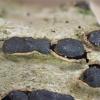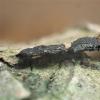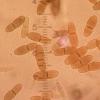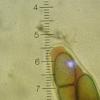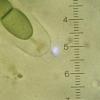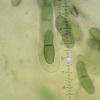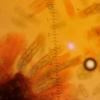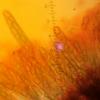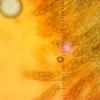
20-12-2025 23:08
Patrice TANCHAUDBonsoir, récolte sur sol sablonneux dans l'arri�

21-12-2025 09:32
Hello.A tiny ascomycete found embedded in wood in

20-12-2025 15:47
Mirek GrycHi.These grew on pine wood that was heavily covere

18-12-2025 21:17
Pol DebaenstThe identification took me to Byssonectria deformi

15-12-2025 07:09
 Danny Newman
Danny Newman
indet. Rutstroemiaceae sp. on unk. fallen leavesMc

19-12-2025 10:10
Patrice TANCHAUDBonjour, récolte réalisée en milieu dunaire, a

18-12-2025 17:23
 Bruno Coué
Bruno Coué
Bonjour,je serais heureux d'avoir votre avis sur c
Rhizodiscina lignyota?
Edvin Johannesen,
15-02-2019 20:44

Hi!
These black, semi-immersed/erumpent apothecioid ascomata on Salix (?) twig, have spores which strongly resemble Rhizodiscina lignyota. But the spores are too large; 20-25 x 7-9 microns. Are we in Patellariaceae or am I totally lost?
Hans-Otto Baral,
15-02-2019 21:12

Re : Rhizodiscina lignyota?
the asci are also too slender for Rhizodiscina. Did you test IKI?
How look the paraphyses? The dead asci are very thick-walled as I see, surely they are fissitunicate.
Are the asci in perithecia, did you do a vertical section for a macrophoto?
How look the paraphyses? The dead asci are very thick-walled as I see, surely they are fissitunicate.
Are the asci in perithecia, did you do a vertical section for a macrophoto?
Edvin Johannesen,
15-02-2019 21:39

Re : Rhizodiscina lignyota?
The second photo is a cross section. I see no perithecia or ostioles. I will check IKI and paraphyses. Thanks so far!
Edvin Johannesen,
15-02-2019 22:45
Gernot Friebes,
16-02-2019 07:42
Re : Rhizodiscina lignyota?
Hi, Edvin,
I think you might have Dothidea sambuci there.
Best wishes,
Gernot
I think you might have Dothidea sambuci there.
Best wishes,
Gernot
Hans-Otto Baral,
16-02-2019 08:32

Re : Rhizodiscina lignyota?
Indeed, Gernot, it is. The species doe snot seem to be very host specicif, as I have here also a sample on Berberis? Sambucus would easily be recognised by its large pith, did you check that, Edvin?
Edvin Johannesen,
16-02-2019 11:35

Re : Rhizodiscina lignyota?
Indeed! There are 16 previous collections from Norway, of which seven have substrate information; six on S. nigra and one on S. racemosa. Looking at it now (should have seen it right away), this one is undoubtedly Sambucus racemosa.
Thanks a lot for your help.
Edvin

